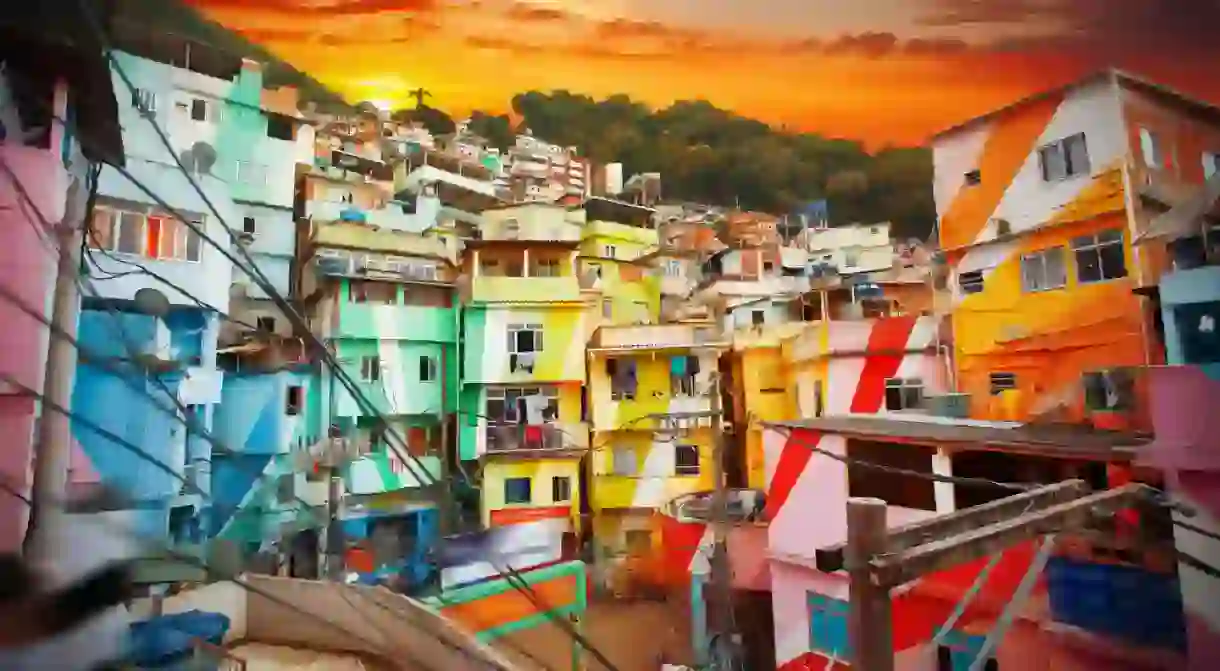A Brief History of Rio De Janeiro’s Favelas

The favelas’ image is shrouded with negative associations with drugs, crime, murder and poverty. This biased viewpoint of a favela fails to account for their symbolism in urban development in Rio de Janeiro and their rich contribution to history. Here’s how and why they developed.
Birth of the favela
The first favela came to Rio in the late 1800s. After the Canudos War in Bahia, Brazilian soldiers marched to Rio de Janeiro to receive their deserved payment. They waited in the hillsides for the government to hand over the money. Yet they never got paid, and so they never left. They soon settled into makeshift accommodation in a neighborhood that came to be known as Morro da Favela, named after the favela trees in Bahia that the soldiers had previously lived among. It was from this moment, the culture of Rio’s favela was born.

Gap between rich and poor
The image that is associated with favelas today largely stems from the development of research in social sciences in the early 1900s. Academics entered the increasing numbers of favelas to study life inside and left with harsh descriptions of uneducated people, dirty living conditions and highly-sexualised environments. They simultaneously carved a deep-set stereotype that remains today and unwittingly highlighted the enormous gap between rich and poor.

Growing resentments
The prospects of a better image and support for these makeshift communities continued to plummet when in the 1920s they were seen as a social nuisance by two key segments of society: by Rio’s citizens who saw them as the root of local crime rates, and by a government that saw them as obstacles standing in the way of urban development. The resentment grew when in the 1940s, the housing crisis in Rio hit a peak as a wave of mass migration swamped the city, the result of a countrywide economic crisis. With a severe lack of housing and government support, people depended on their own resources and started constructing more favelas.

Favela eradication policy
This substantial growth caught the attention of the local government who decided that something needed to be done against this rising burden once and for all. In the 1960s, the favelas – many of which had no sanitation, electricity or local services – were subjected to the favela eradication policy, leading to the displacement of hundreds of thousands of people. The government moved them into public housing projects in an attempt to regulate housing, such as Cidade de Deus (City of God), a community made famous by the 2002 film that takes its name. It was later deemed a failure when poor planning and half-hearted government investment led to the housing projects simply turning into new favelas.
Gang warfare
These inadequate conditions and feeble governmental support left favelas exposed to changes in drug production and trade routes in Latin America, and they soon became hubs for drug trafficking, gangs and the arms trade in the 1980s. Millions of dollars streamed through the favelas, making drug lords and gang leaders wealthy. Violence and crime consequently rose, and the favelas were ruled by illegal gangs. Eventually, in 2008, the Brazilian government implemented a pacification policy where batches of UPP (Police Pacification Units) were set up in key, violent favelas in an effort to reclaim land controlled by gangs. The result was a bloody war between gangs and police, followed by instability and lack of security in the city. However, when the dust settled, formerly violent favelas were controlled and stablized into safer communities for residents.

Optimistic future
The south zone of Rio de Janeiro and some significant points in the north zone are now far more peaceful favelas, largely controlled by police rather than fully ruled by drug lords. Yet the negative image of crime, poverty, dirt and violence remains; a narrow-minded perspective amid a complex history. Reflecting on the favelas’ development, it’s just as easy to see a community created by industrious people that had no place to live, no government support and needed a home. In the face of this adversity, favela inhabitants didn’t fall into poverty but made the best of a limited situation. Nowadays, they act as a fundamental part of the Brazilian society, inspiring art – as can be seen in the colorful houses in Santa Marta – music, and a unique favela culture.













